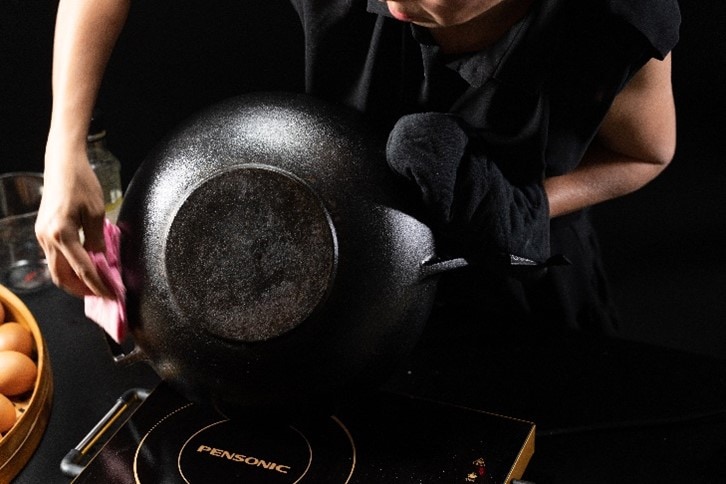Maintaining cast iron cookware is a straightforward task that can ensure the longevity of your kitchen essentials. With just a few simple steps, you can preserve your cast iron pieces for years to come, allowing you to enjoy countless delicious meals with friends and family. In this article, we’ll delve into the essential tips for cleaning and caring for your cast iron cookware, from seasoning before use to occasional re-seasoning and proper cleaning techniques. Let’s explore how you can keep your cast iron cookware in pristine condition and ready for your next culinary adventure!
1. Before using your cast iron, wipe and season it.
Prior to using your cast iron cookware, it’s essential to season it. Begin by removing any labels and wiping the entire surface with a damp cloth and mild soap. Once dry, apply vegetable oil evenly using a kitchen towel to safeguard the metal from rust and prevent food from sticking during cooking.

2. Use warm water, soap, and a scrub brush for cleaning.
When cleaning your cast iron cookware, opt for warm water and mild soap to preserve its seasoning. Avoid harsh detergents and abrasive scrub brushes, which can harm the cookware’s seasoning. For stubborn messes, gentle scrubbing with a stiff bristle brush should suffice, but be cautious not to scrub too vigorously. With perseverance and patience, dirt and food residue should come off effortlessly.
3. Steer clear of abrasive materials such as steel wool during the cleaning process.
Reserve the use of steel wool for extreme cases when cleaning your cast iron cookware. If necessary, ensure gentle and uniform scrubbing to avoid wearing down the seasoning. Preserve the seasoned coating by employing only mild, non-abrasive cleaning methods like nylon scrub brushes, wooden utensils, or plastic scrapers.
4. Occasionally re-season your cookware to maintain its oil coating.
Re-seasoning your cast iron cookware is crucial for maintaining its oiliness and preventing rust. To re-season, apply a thin layer of cooking oil to the interior and bake in a 350°F oven for 30 minutes. Allow the cookware to cool fully before reuse. Repeat this process once or twice a year to maintain its pristine condition.
5. Opt for higher heat when dry cooking rather than using oil or fat.
For dry cooking with your cast iron cookware, opt for the highest heat setting available. This prevents the development of rust spots. Also, use oils with high smoking points like peanut oil or ghee to prevent food from burning and sticking. Lastly, cook at higher heat settings for shorter durations to avoid overheating the pan.
Conclusion
In conclusion, maintaining cast iron cookware is a simple process that ensures longevity and excellent cooking performance. By following these easy steps, you can protect your kitchen staples and enjoy delicious meals with friends and family for years to come.




